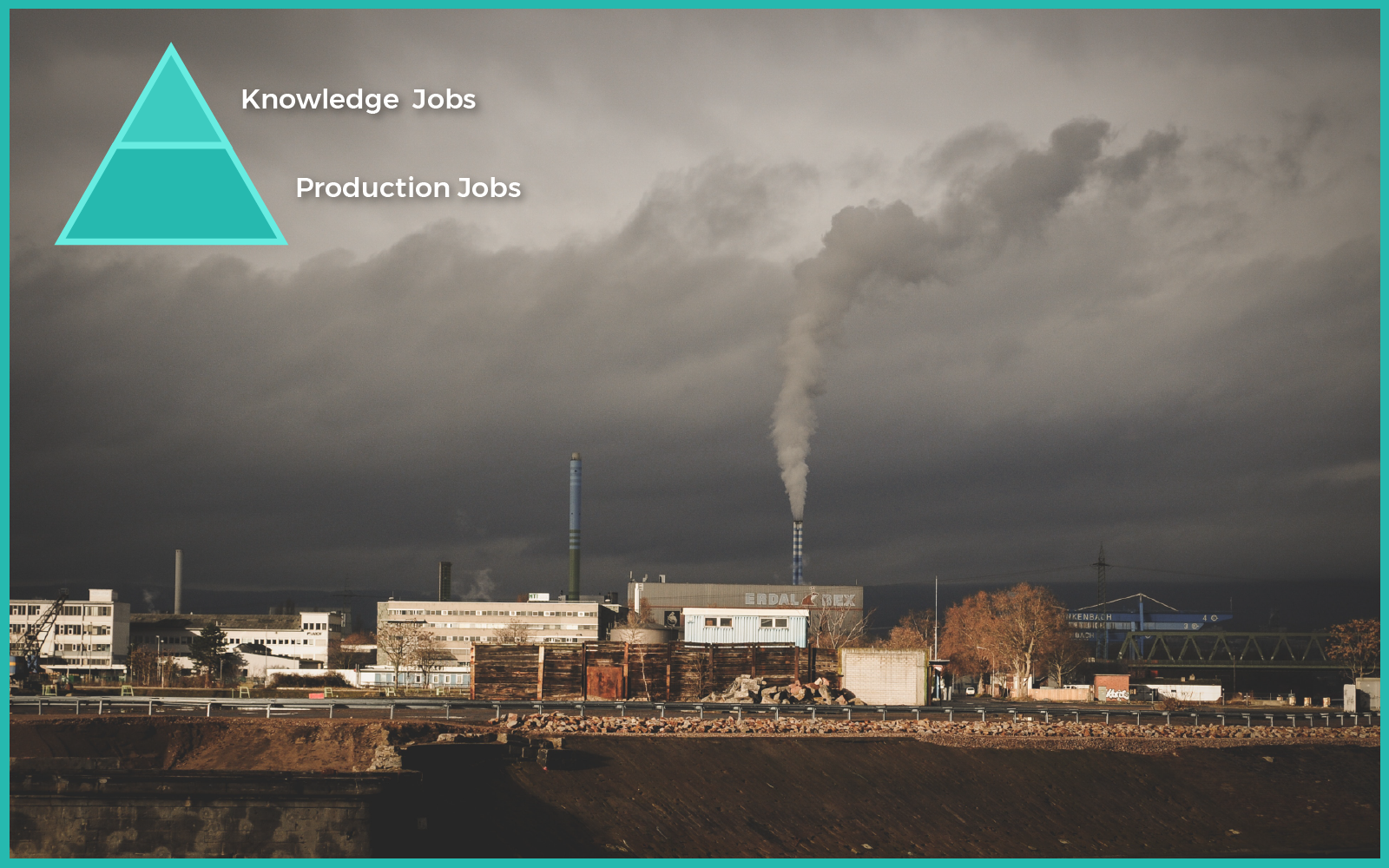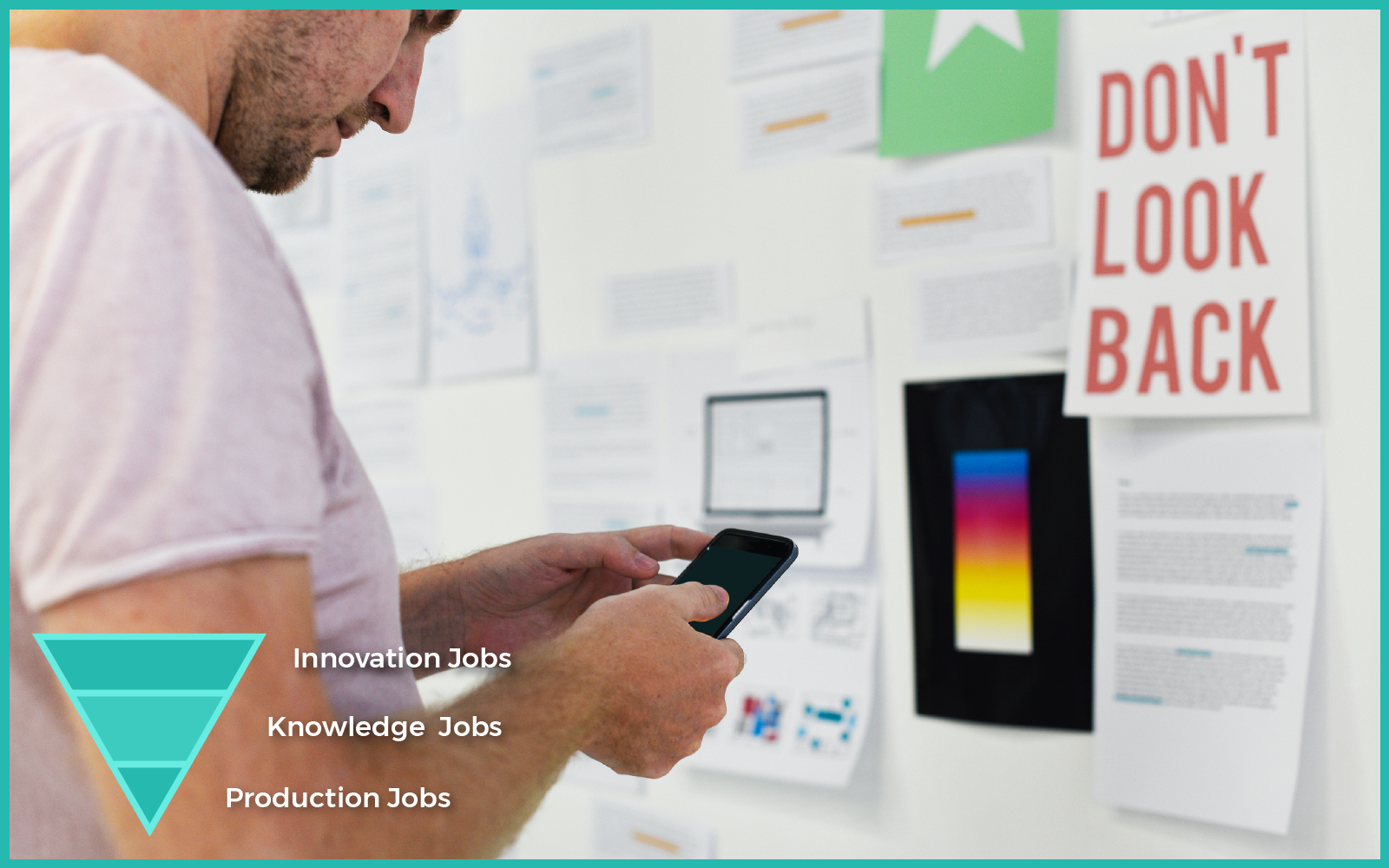With headlines like “Yes, the robots will steal our jobs” gracing the news almost every day, it’s time we face the facts: Our education system is preparing us for jobs that won’t exist in 10 years. Teachers, traders, and truck drivers are all in serious danger of seeing their jobs replaced with software from companies like Khan Academy, Robinhood, and Tesla. The world’s economy is undergoing its most radical shift since the Industrial Revolution. Our education system needs to keep up. Luckily, there is some hope. In the past, radical technological and economic changes were what drove changes in education. In fact, it was the Industrial Revolution that produced the system of education that we have today. But we have to keep changing; otherwise we’ll be stuck with a system perfect for the 1800s but woefully unequipped to prepare us for the 21st century.
Industrial Origins
Sir Ken Robinson, in his famous TED talk entitled “Do schools kill creativity?”, lays out the comprehensive argument that our education system was built for the industrial age and is no longer adequate for today’s world. Industrialism was founded on the core principles of conformity, compliance, linear processes, and division of labor. These principles are still perpetuated by our current education system through standardized testing, division of subject matters, and even the concept of moving up through “grade-levels” year after year.
During industrialism, the kinds of jobs we were looking to fill resembled a pyramid. Society needed droves of uniform, competent, and compliant people to fulfill the majority of the manual labor jobs at the bottom of the pyramid, while only needing a few to become college graduates and perform the higher cognitive roles at the top. In effect, this division of labor created an extremely linear educational path. You study basic overall subjects, and if you do well, you move on to the next level of the pyramid.
To ensure people conformed to the system, those in power set up an elaborate system of standardization with oh-so-fun tests, like the SATs, to judge how everyone is performing. This is what Ken Robinson calls an “SAT-ocracy” in which the elites are at the top, and those who don’t conform to the system are at the bottom. Unfortunately, tying our value as a person to the quality of our work is something that’s been ingrained in us since we were children. So much of our education system is set up to reduce our identity to a mere sum of our work. What’s your GPA? What are your SAT and ACT scores? Much of your higher educational fate hangs in the balance of these answers. In essence, we are treating humans like different products on an assembly line. Those who don’t meet the standards are discarded, and the those who meet our qualifications are sold for labor.
Old Jobs
The times, however, have changed. While the industrial education system has been effective in educating billions worldwide, soon it will leave students without the skills they need to succeed. Thanks to the internet and smartphones, we have instant access to all information. We no longer need to collect and keep as many facts as we possibly can stored in our brains. This continuous access to information is rendering the industrialized educational system — and measures of success like the SATs — obsolete. The principles of conformity, compliance, linear processes, and division of labor couldn’t be further from the skills of creativity and collaboration we need to master innovation.

In the Industrial economy, the most prevalent jobs were Production Jobs. These were jobs with a very specific set of instructions to follow in order to mass produce a consistent, low-cost product. The twentieth century saw the rise of the Information economy, and along with it, a growing demand for Knowledge Jobs. Knowledge Jobs rely on specific, specialized, expert knowledge, like internal medicine, to decide which set of predetermined solutions to apply to a problem.
During the height of the industrial revolution and continuing through the information age, Production and Knowledge Jobs were in full demand. But today, people who currently have Production and Knowledge Jobs (while extremely vital to our world) are at risk of becoming outperformed by technology. Today robots are building our cars and software is diagnosing diseases. So where does that leave us?
The Future of Work
The three forces of the innovation economy, automation, access, and abundance, are changing everything. The pyramid is being flipped. Production Jobs and Knowledge Jobs are being replaced by the jobs of the future — Innovation Jobs. In Innovation Jobs, the goal is to be creative, to come up with something that no one ever has. Innovation Jobs, according to Karl Aspelund, author of The Design Process, are seeing “an enormously increased demand” with our growing need to control and creatively harness our technology.

People who are preparing to enter or are already in the workforce have largely spent their entire education preparing for the first two types of jobs, Production and Knowledge. But innovation is not only a different skill, it’s can’t even be measured in the same was as Knowledge and Production. Knowledge Jobs have right answers, and Production Jobs have correct methods, so it makes sense to measure our ability to “get it right.” But innovation is very different. It’s creative. There is no perfect, no right design. You’re making things, not trying to come up with what someone else has already determined is the right answer. Innovation work will be measured by time and impact, the time you're spending working to make people’s lives better and the impact you’re having on the world.
The Challenge Ahead
The times are changing, and our education system needs to catch up. If we don’t do something, someone starting their education today will enter the workforce in 2035 and will have experienced 16 years of curriculum that never once included a class on innovation or creativity. The rest of us who’ve already completed our education are in even worse trouble. Our current Production Jobs and Knowledge Jobs are being replaced by software. Our only hope for continued employment will be Innovation Jobs. This means we not only need to change our education system for today’s kids, but we also need to create a system that can re-train people who have been in the workforce for decades on how to be innovative. We’re not without hope. Schools like The Bay School in San Francisco focus specifically on teaching their students innovative thinking. Researchers at UT Dallas have developed a training program proven to advance innovative thinking in adults over 55. But unfortunately, these examples are still the exception to the norm.
The challenge ahead is daunting, but it also represents a huge opportunity. With so much of Production and Knowledge work being automated, a single person is capable of building something that would have taken hundreds of people a decade ago. And, hey, Innovation Jobs are actually a lot of fun. And there’s nothing more fulfilling than finding some way to improve the lives of others. A future where that’s everyone’s job is actually pretty exciting.





